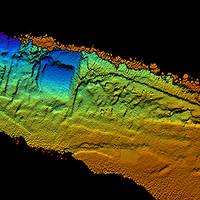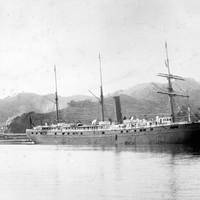Images of Historic San Francisco Wreck Revealed

NOAA and partners released three-dimensional sonar maps and images of an immigrant steamship lost more than 100 years ago in what many consider the worst maritime disaster in San Francisco history. On Feb. 22, 1901, in a dense morning fog, the SS City of Rio de Janeiro struck jagged rocks near the Golden Gate Bridge and sank almost immediately, killing 128 of the 210 passengers and crew aboard the ship. Fishermen in the area, hearing the ship's distress calls, helped rescue 82 survivors, many plucked from makeshift rafts and floating wreckage.
First Images of Historic San Francisco Shipwreck

NOAA and its partners released 3D sonar maps and images of an immigrant steamship lost more than 100 years ago in what many consider the worst maritime disaster in San Francisco history. On Feb. 22, 1901, in a dense morning fog, the SS City of Rio de Janeiro struck jagged rocks near the present site of the Golden Gate Bridge and sank almost immediately, killing 128 of the 210 passengers and crew aboard the ship. Fishermen in the area, hearing the ship’s distress calls, helped rescue 82 survivors, many plucked from makeshift rafts and floating wreckage.
Underwater Inspection System for Port of Long Beach

Long Beach Police Department takes delivery of Coda Octopus Underwater Inspection System (UIS™) system. The Port of Long Beach is the second busiest seaport in the United States and is a major gateway for trade with Asia, handling over six million containers annually. The UIS™ which includes Echoscope® real-time 3D sonar technology will be used primarily for underwater inspections of the port's 10 piers and eighty berths and other critical infrastructure. It will also be used for preventative maintenance such as keeping the shipping channels clear of dangerous debris and other objects.





